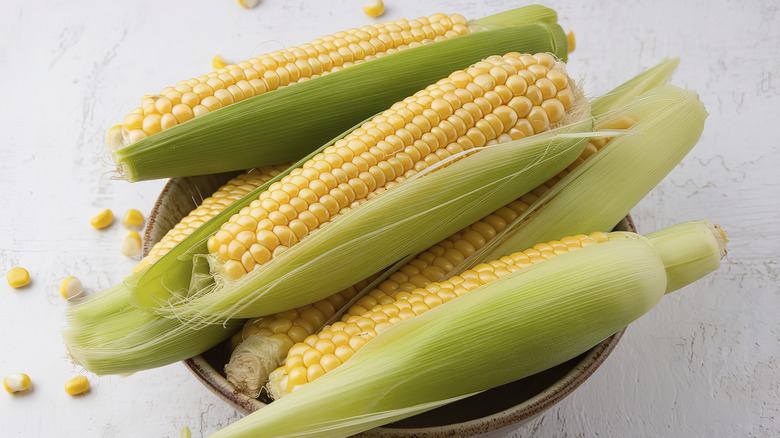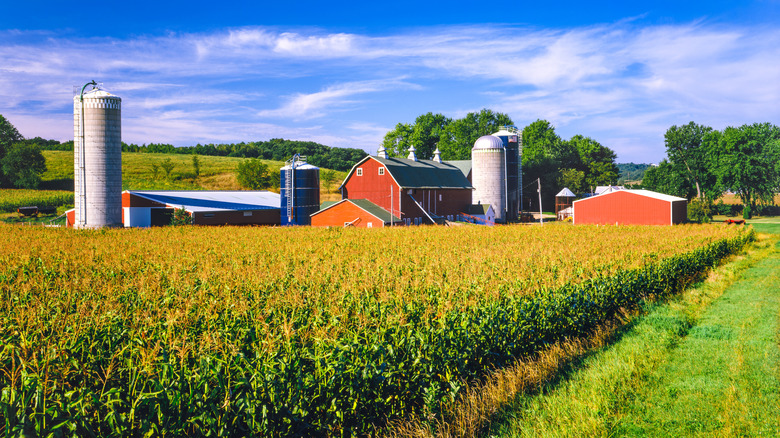The State That Produces The Most Corn Isn't Nebraska Or Illinois
While corn is produced around the world, it is predominantly grown and harvested in the United States, with over 15.3 billion bushels of the fruit (yes, corn is a fruit — and also a vegetable, and also a grain) produced in 2023. Nebraska, Illinois, Iowa, and Minnesota are the top states, growing 54% of the country's total production. The leader, however, is Iowa, with over 2.5 billion bushels produced in that state alone in 2023-2024. The United States Department of Agriculture predicts that in 2025, Iowa is set to produce 2.58 billion bushels, a steady increase that still keeps it at the lead.
Iowa forms part of the heartland region, a group of Midwestern states that geographically sit in or near the center of the United States, and are also responsible for a huge percentage of the harvesting that feeds the American people. In Iowa's case, it is the nation's number one producer of not just corn, but eggs, pigs, ethanol, and biodiesel. The latter two might seem odd, but ethanol is a direct by-product of corn, and this natural fuel alternative has set the state up for sustainability success. Iowa runs over 40 corn ethanol plants, and these institutions are responsible for producing nearly 30% of the nation's ethanol. The Hawkeye State is home to a whopping 86,900 farms, the majority of which are owned by families. These multi-generational family farms are key to Iowa's agricultural and economic success.
Why Iowa grows so much corn
The Iowa climate and soil conditions have enabled corn production in the state to boom for over 150 years. By the time the Civil War rolled around, Iowa already had an established market of both corn and pigs, the combination of which carried them through years of instability. Farmers established early on that they could split their corn production into two: one avenue for corn made for human consumption, and the other for feeding livestock, of which there was already plenty in the state. Corn always grew far better than other grains in Iowa, so farmers decided to cut their losses and streamline production. Since then, technological and agrarian advancements have expanded corn's by-products, leading to the impressive rate of ethanol production in addition to the production of both conventional and heirloom corn varieties for consumption.
Additionally, laws were implemented over the years to protect farmers from volatile market prices, and financial incentives were offered to family farms to continue their honest work and ensure a constant supply of corn. The added benefit of family farms is the passing down of invaluable knowledge that has ensured Iowa farmers improve from generation to generation, while never losing track of the knowledge of the land that forms the basis of successful corn production.


